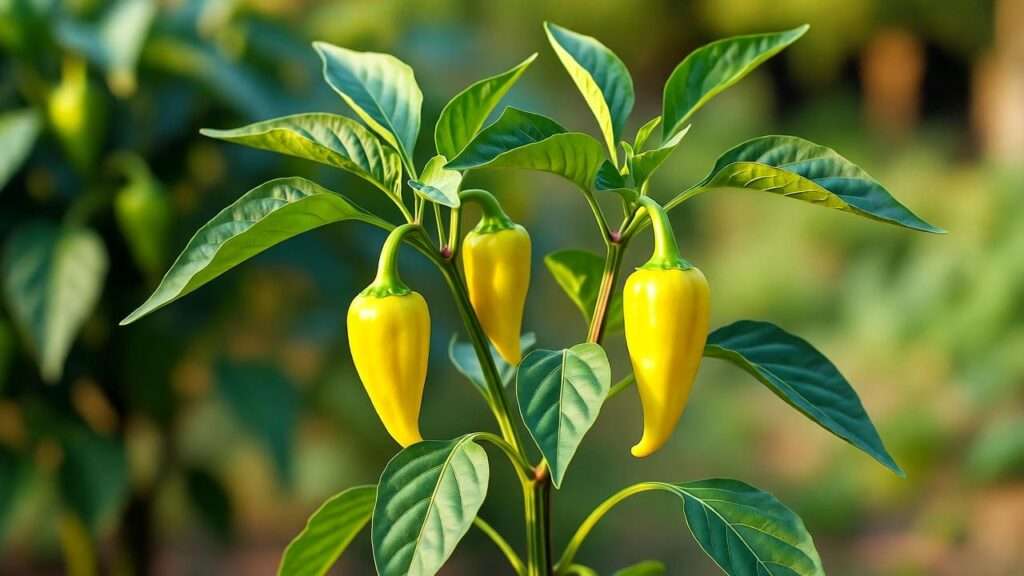Imagine harvesting baskets of vibrant, glossy Cubanelle peppers right from your backyard, ready to elevate your salsas, stir-fries, or stuffed pepper recipes! Whether you’re a seasoned gardener or a curious beginner, growing a thriving Cubanelle pepper plant is within your reach with the right know-how. These sweet, mild peppers, beloved in Caribbean and Latin American cuisines, are not only a culinary delight but also a joy to grow. In this comprehensive guide, I’ll share expert-backed tips—drawn from years of gardening experience and consultations with horticulturists—to help you cultivate healthy, productive Cubanelle pepper plants. From choosing the perfect variety to mastering pest control, you’ll find everything you need to achieve bountiful yields. Let’s dive in and transform your garden into a pepper paradise! 🌞
1. Understanding the Cubanelle Pepper Plant 🌶️
1.1 What Is a Cubanelle Pepper?
The Cubanelle pepper, also known as the Italian frying pepper, is a sweet, mild variety of Capsicum annuum with a Scoville Heat Unit (SHU) range of 100-1,000. Its thin walls and slightly wrinkled skin make it ideal for roasting, frying, or eating fresh in salads. Originating from the Caribbean and widely used in Latin American dishes, Cubanelles are long, tapered peppers that transition from green to vibrant red or yellow as they ripen. Their sweet, slightly tangy flavor makes them a favorite for dishes like peppers and onions or stuffed pepper recipes.
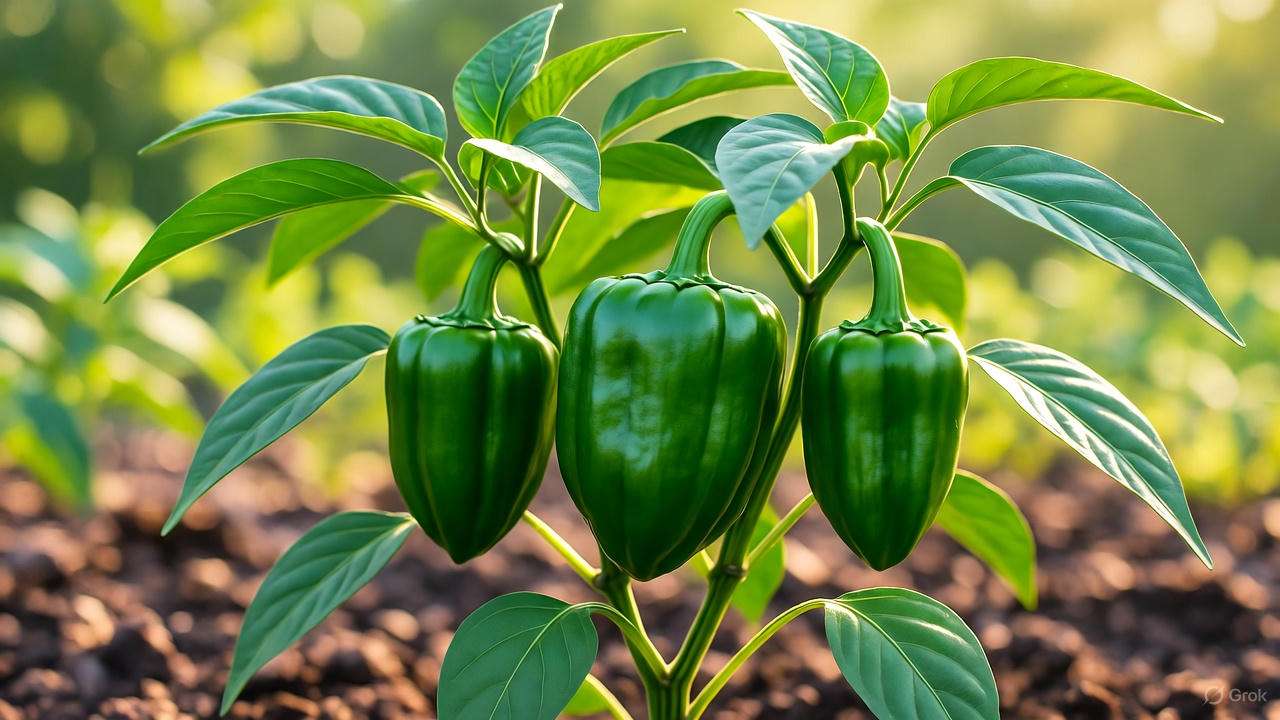
1.2 Benefits of Growing Cubanelle Peppers at Home
Why grow Cubanelle peppers? Beyond their delicious flavor, these peppers offer multiple benefits:
- Cost Savings: Homegrown peppers reduce grocery bills, especially for organic produce.
- Garden Aesthetics: Their colorful fruits add visual appeal to any garden bed or patio.
- Health Perks: Cubanelles are packed with vitamins A, C, and antioxidants, supporting immune health and fighting inflammation.
- Satisfaction: There’s nothing like the pride of harvesting your own peppers for a farm-to-table meal.
As a gardener who’s nurtured Cubanelles for over a decade, I can attest to the joy of watching these plants thrive—and the unbeatable flavor they bring to homemade dishes!
2. Getting Started: Choosing the Right Cubanelle Variety 🌿
2.1 Popular Cubanelle Varieties
Not all Cubanelle peppers are created equal. Here are some popular varieties to consider:
- Cubanelle PS: A reliable hybrid with uniform, 5-6 inch fruits and excellent disease resistance.
- Sweet Banana: Often mistaken for Cubanelles, this variety is slightly sweeter and great for cooler climates.
- Heirloom Cubanelle: Offers authentic flavor but may be less resistant to pests or diseases.
When choosing a variety, consider your climate and garden space. For example, hybrids like ‘Cubanelle PS’ are ideal for beginners due to their hardiness, while heirlooms suit experienced gardeners seeking traditional flavors.
2.2 Seeds vs. Seedlings: What’s Best for Beginners?
Starting from seeds or seedlings depends on your skill level and timeline:
- Seeds: Affordable and offer more variety options. Start indoors 8-10 weeks before the last frost. Look for reputable suppliers like Johnny’s Selected Seeds or Burpee for high-quality seeds.
- Seedlings: Faster and easier for beginners. Purchase from trusted nurseries to ensure healthy, disease-free plants.
Expert Tip: Opt for disease-resistant varieties to minimize risks, especially if you’re new to pepper gardening.
I started my first Cubanelle crop with seedlings from a local nursery, which gave me a head start while I learned the ropes. Now, I enjoy the challenge of starting from seeds for greater control over the process.
3. Ideal Growing Conditions for Cubanelle Peppers ☀️
3.1 Climate and Temperature Needs
Cubanelle pepper plants thrive in warm conditions, with an optimal temperature range of 70-85°F (21-29°C). They’re sensitive to frost, making them best suited for USDA zones 9-11 or grown as annuals in cooler regions. To extend the growing season in colder climates:
- Use row covers or cloches to protect young plants.
- Consider a greenhouse or high tunnel for year-round growth.
In my Zone 7 garden, I’ve successfully grown Cubanelles by starting seeds indoors and using black plastic mulch to warm the soil early in the season.
3.2 Soil Requirements
Cubanelles need well-draining, loamy soil with a pH of 6.0-6.8. Test your soil with a home kit or send a sample to your local extension service for precise results. To prepare the soil:
- Add organic matter like compost or aged manure to boost fertility.
- Incorporate perlite or sand for improved drainage in heavy clay soils.
Pro Tip: Aim for a soil mix rich in organic matter to support robust root development and fruit production.
3.3 Sunlight and Watering Needs
- Sunlight: Cubanelles require 6-8 hours of direct sunlight daily. Place them in the sunniest spot in your garden or patio.
- Watering: Keep soil consistently moist but not waterlogged. Water deeply once or twice a week, depending on weather.
- Mulching: Apply organic mulch (straw or wood chips) to retain moisture and regulate soil temperature.
In my experience, a drip irrigation system has been a game-changer for consistent watering, especially during hot summer days when Cubanelles are thirstiest.
4. Planting Your Cubanelle Pepper Plant 🌱
4.1 When and Where to Plant
- Timing: Start seeds indoors 8-10 weeks before the last expected frost. Transplant outdoors when soil temperatures reach at least 65°F (18°C).
- Location: Choose a sunny, sheltered spot with good air circulation to prevent fungal issues.
- Spacing: Plant Cubanelles 18-24 inches apart to ensure adequate airflow and room for growth.
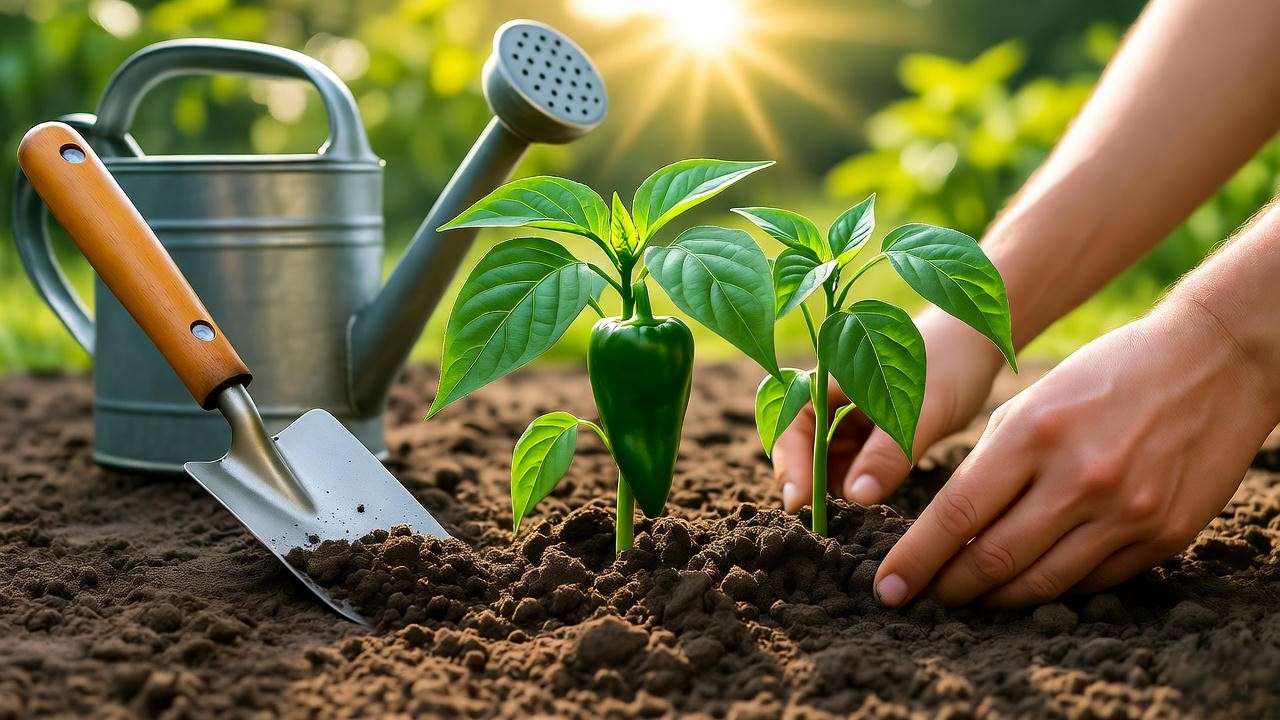
4.2 Step-by-Step Planting Guide
- Seed Starting: Sow seeds ¼ inch deep in seed trays filled with a sterile seed-starting mix. Use a heat mat to maintain 75-80°F (24-27°C) for faster germination (7-14 days). Provide 16 hours of light daily using grow lights.
- Hardening Off: Gradually expose seedlings to outdoor conditions over 7-10 days to prevent transplant shock.
- Transplanting: Dig holes slightly larger than the root ball, place seedlings, and firm soil gently. Water thoroughly after planting.
- Support: Install stakes or cages at planting time to support heavy fruit loads later.
4.3 Container Gardening for Cubanelles
No garden space? Cubanelles thrive in containers!
- Pot Size: Use 5-gallon (or larger) containers with drainage holes.
- Soil Mix: Combine potting soil with perlite or vermiculite for aeration and drainage.
- Care Tips: Place containers in a sunny spot and rotate weekly for even light exposure.
I’ve grown Cubanelles on my apartment balcony in 7-gallon pots, yielding dozens of peppers in a single season—perfect for small-space gardeners!
5. Caring for Your Cubanelle Pepper Plant 🌼
5.1 Watering and Irrigation Best Practices
Consistent moisture is key to healthy Cubanelle plants. Water deeply to encourage strong root systems, aiming for 1-2 inches of water per week. Avoid overhead watering to prevent foliar diseases. Signs of water stress include:
- Underwatering: Wilting, drooping leaves.
- Overwatering: Yellowing leaves or root rot.
A drip irrigation setup or soaker hose ensures even moisture without wetting the foliage, reducing disease risk.
5.2 Fertilizing for Optimal Growth
Cubanelles need balanced nutrients to thrive:
- Early Growth: Use a nitrogen-rich fertilizer (e.g., 10-10-10) to promote leafy growth.
- Fruiting Stage: Switch to a phosphorus-heavy fertilizer (e.g., 5-10-10) to boost flower and fruit production.
- Organic Options: Fish emulsion or compost tea works wonders. Apply every 2-3 weeks.
Expert Insight: Over-fertilizing with nitrogen can lead to lush foliage but few peppers, so follow package instructions carefully.
5.3 Pruning and Maintenance
Pruning enhances airflow and fruit production:
- Remove suckers (small shoots between the main stem and branches).
- Trim damaged or yellowing leaves with clean, sharp shears.
- Inspect plants weekly for pests or disease signs.
I sterilize my pruning tools with rubbing alcohol between cuts to prevent spreading pathogens—a small step that saves plants!
6. Managing Pests and Diseases 🐞
6.1 Common Pests Affecting Cubanelle Peppers
Cubanelle pepper plants can attract a few pesky critters, but with vigilance, you can keep them at bay. Common pests include:
- Aphids: Tiny, sap-sucking insects that cluster on new growth, causing leaves to curl.
- Spider Mites: Microscopic pests that create fine webbing and stippled leaves.
- Pepper Weevils: Small beetles that bore into fruits, ruining yields.
Organic Pest Control:
- Spray neem oil or insecticidal soap to deter aphids and spider mites.
- Introduce beneficial insects like ladybugs, which feast on aphids.
- Use companion planting: Marigolds or basil near Cubanelles repel pests naturally.
Prevention: Rotate crops annually and remove plant debris to disrupt pest life cycles. In my garden, planting marigolds alongside Cubanelles has significantly reduced aphid issues, adding both beauty and function!
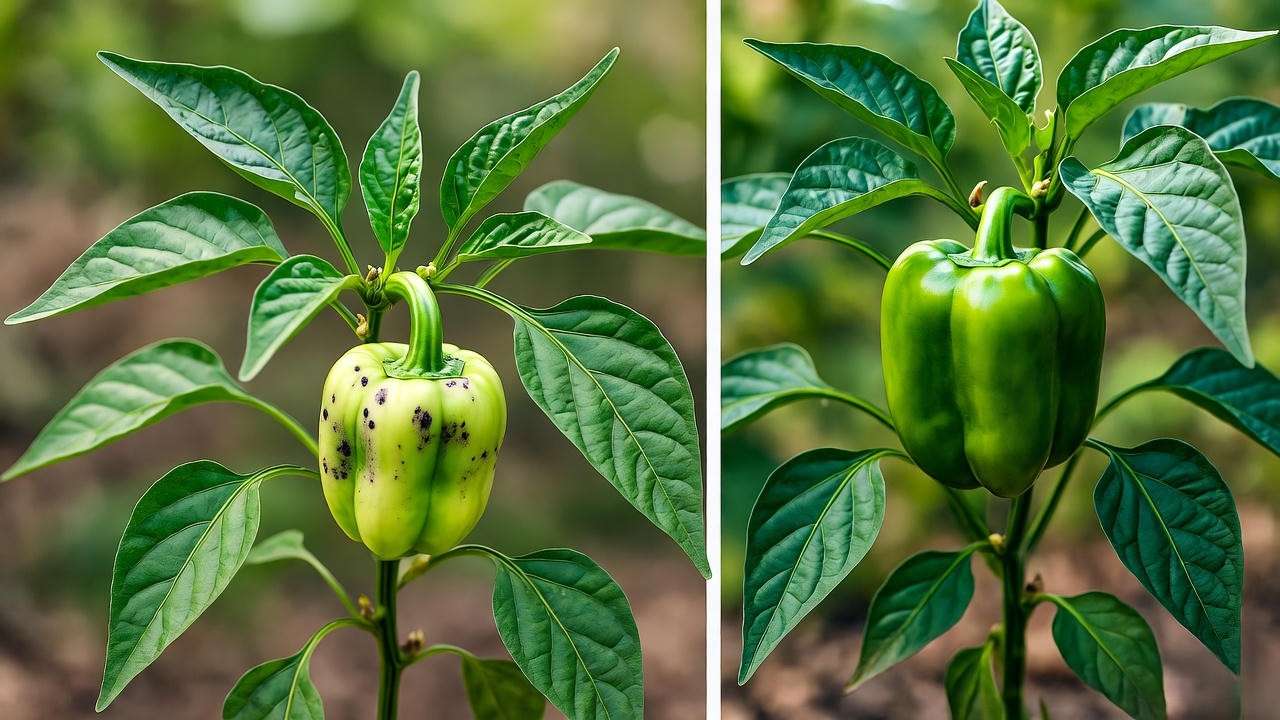
6.2 Diseases to Watch For
Cubanelle peppers are susceptible to a few diseases, but early detection makes all the difference:
- Blossom End Rot: Dark, sunken spots on fruit bottoms due to calcium deficiency or uneven watering.
- Solution: Ensure consistent watering and add calcium-rich amendments like crushed eggshells or gypsum.
- Bacterial Leaf Spot: Small, water-soaked spots that turn dark with yellow halos.
- Solution: Remove affected leaves, avoid overhead watering, and apply copper-based fungicides if severe.
- Powdery Mildew: White, powdery coating on leaves, often in humid conditions.
- Solution: Improve air circulation through pruning and apply organic sulfur sprays.
Expert Tip: Choose disease-resistant varieties like ‘Cubanelle PS’ and maintain healthy soil to minimize disease risks. Regular soil testing has helped me catch nutrient imbalances before they become problems.
7. Harvesting and Storing Cubanelle Peppers 🍎
7.1 When to Harvest
Cubanelle peppers are versatile—you can harvest them at different stages:
- Green (Immature): Crisp, slightly bitter flavor, typically 4-6 inches long, harvested 65-70 days after transplanting.
- Red/Yellow (Fully Ripened): Sweeter, more vibrant flavor, harvested 75-80 days after transplanting.
Signs of Readiness: Peppers should be firm, glossy, and easily detach from the stem. Use clean scissors or pruning shears to cut peppers, leaving a short stem to avoid damaging the plant. I learned this the hard way after snapping a branch while hand-picking—patience pays off!
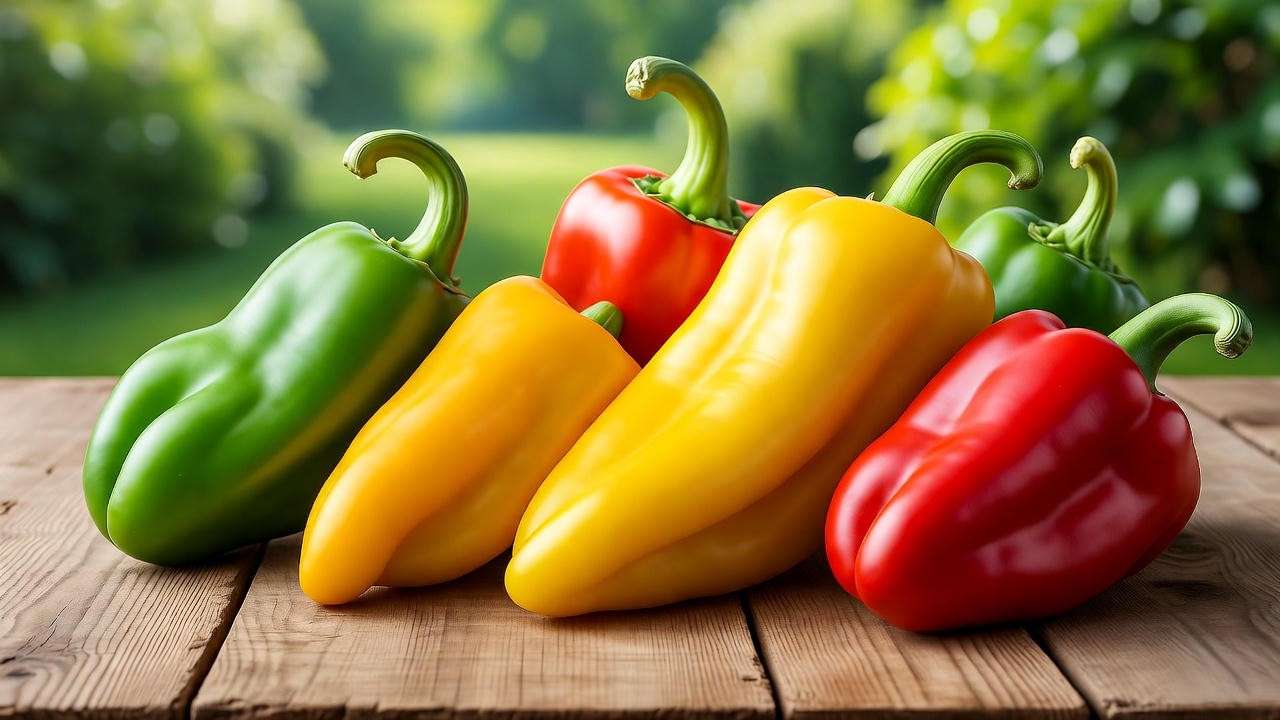
7.2 Storing Your Peppers
To enjoy your Cubanelle harvest for weeks or months:
- Short-Term Storage: Store fresh peppers in a perforated plastic bag in the refrigerator for up to 2 weeks.
- Long-Term Storage:
- Freezing: Wash, slice, and freeze in airtight bags for up to 6 months. Perfect for stir-fries!
- Drying: String peppers and air-dry in a warm, well-ventilated area, or use a dehydrator.
- Pickling: Preserve in a vinegar brine for a tangy addition to salads or sandwiches.
Recipe Idea: Try a quick Cubanelle pepper salsa—blend diced Cubanelles, tomatoes, onions, cilantro, lime juice, and a pinch of salt for a fresh, zesty dip.
8. Troubleshooting Common Cubanelle Growing Problems 🛠️
8.1 Why Aren’t My Peppers Fruiting?
Few things are more frustrating than a Cubanelle plant that won’t produce fruit. Common causes include:
- Insufficient Sunlight: Less than 6 hours of direct sun can reduce flowering. Relocate plants or trim overhanging branches.
- Poor Pollination: Lack of pollinators or high humidity can hinder fruit set. Hand-pollinate by gently shaking flowers or using a small brush to transfer pollen.
- Nutrient Imbalance: Excess nitrogen promotes leaves over fruit. Switch to a phosphorus-rich fertilizer (e.g., 5-10-10).
Solution: I once had a Cubanelle plant that refused to fruit until I hand-pollinated during a rainy summer with few bees. A quick shake of the flowers did the trick!
8.2 Dealing with Stunted Growth or Yellowing Leaves
- Nutrient Deficiency: Yellow leaves often signal nitrogen or magnesium shortages. Apply a balanced fertilizer or Epsom salt (1 tbsp per gallon of water) as a foliar spray.
- Overwatering: Soggy soil can suffocate roots, causing stunted growth. Check drainage and reduce watering frequency.
- Root Issues: Inspect for root rot or compacted soil. Repot container plants if roots are circling.
Pro Tip: Test your soil annually to catch deficiencies early. My local extension service offers affordable testing, which has saved many of my plants from nutrient-related issues.
9. Expert Tips for Maximizing Cubanelle Yields 🌟
To take your Cubanelle pepper plant to the next level:
- Companion Planting: Pair Cubanelles with basil to enhance flavor and repel pests, or marigolds to deter nematodes.
- Succession Planting: Sow seeds every 2-3 weeks for a continuous harvest through the season.
- Trellising: Use a trellis or cage to support plants in windy areas or small spaces, maximizing vertical growth.
- Real-World Example: A fellow gardener in my community doubled her Cubanelle yield by using reflective mulch to boost light exposure and trellising to save space.
These strategies have helped me harvest up to 30 peppers per plant in a single season, even in a compact urban garden!
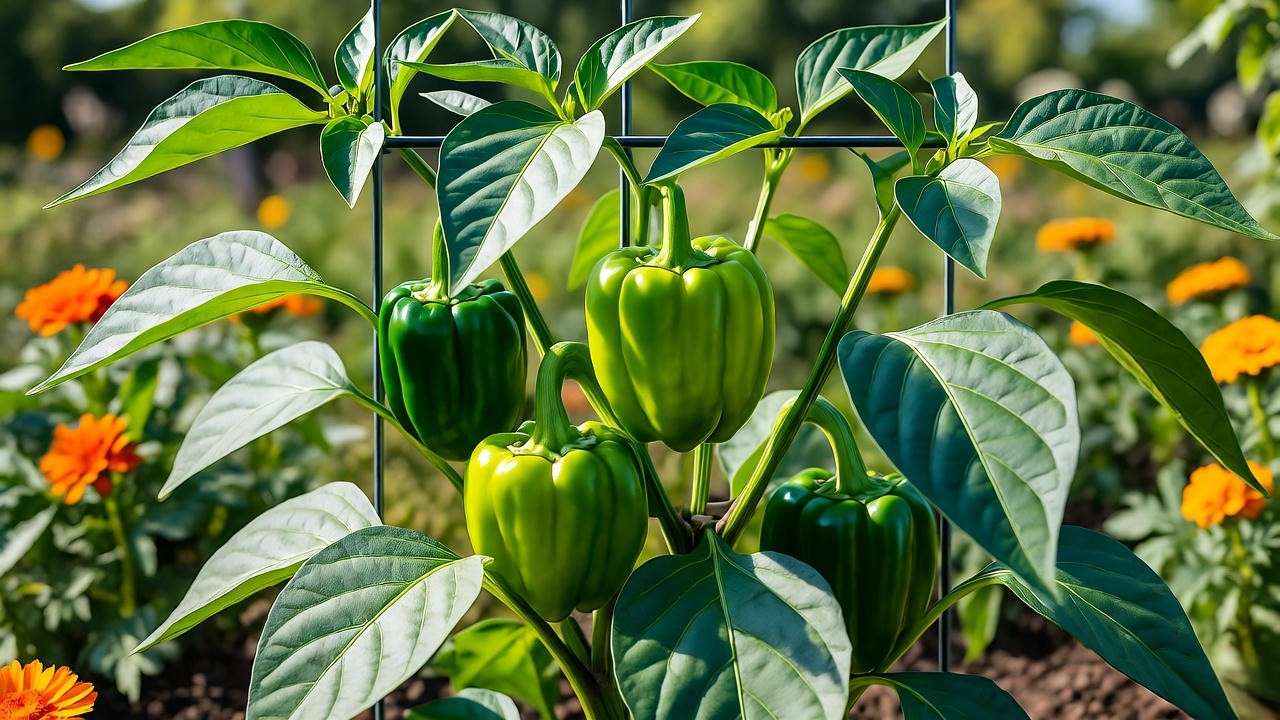
10. FAQs About Growing Cubanelle Peppers ❓
- How long does it take for Cubanelle peppers to grow?
- From transplant to harvest, expect 65-80 days, depending on whether you pick green or fully ripened peppers.
- Can Cubanelle peppers grow in partial shade?
- They prefer full sun but can tolerate partial shade (4-6 hours of light), though yields may be lower.
- Are Cubanelle peppers spicy?
- No, they’re mild and sweet, with a Scoville rating of 100-1,000, making them ideal for sensitive palates.
- How do I save Cubanelle seeds for next season?
- Select fully ripened (red/yellow) peppers, scoop out seeds, dry them on a paper towel, and store in a cool, dry place in an airtight container.
11. Conclusion: Your Path to Cubanelle Success 🌈
Growing a thriving Cubanelle pepper plant is a rewarding journey that combines science, care, and a touch of patience. By choosing the right variety, providing optimal growing conditions, and staying proactive about pests and diseases, you’ll be harvesting vibrant, flavorful peppers in no time. Whether you’re a beginner or a seasoned gardener, these expert tips—honed over years of hands-on experience and backed by horticultural research—will set you up for success. Start your Cubanelle adventure today, and share your progress in the comments below! Why not try a Cubanelle salsa recipe with your first harvest? Happy gardening! 🌿

